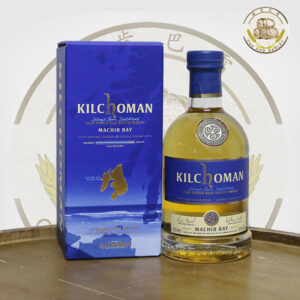


What is a “single malt?” in whiskey terminology? Like so many things in whiskey, it all depends on where you are.
Understanding the role of the word “single” in whiskey starts in Scotland, where the style has been perfected to an art. Single malt Scotch whisky is one of the most heavily regulated styles of whisky in the world.
Among many other rules, it must be made entirely from malted barley, distilled on a copper pot still, aged for at least three years in oak containers, and bottled at no lower than 40% alcohol content, all on Scottish soil.
In Scotland, the word “single” can only be used to refer to a whisky that was distilled at one single distillery. If a bottle of whisky contains a mix of malt whiskies produced at two or more different distilleries, it’s called a blended malt Scotch whisky (the older term–and one we love–is “vatted malt”).
Grain whiskies–which are Scottish whiskies that don’t meet the stringent definition of single malt–can be singles, too. Single grain whiskies are grain whiskies distilled at a single distillery. When malt and grain whiskies are mixed together, the result is called blended whisky. While single malt whisky is Scotland’s most famous style, blended whisky still comprises the lion’s share of whisky production in the U.K.
Of course, distilleries can also release single barrel or single cask whiskies, which are the bottled contents of just one oak barrel. You might also see the words “single batch” on a label, which doesn’t have a legal definition but usually refers to a one-time special release (every single one of Barrell Craft Spirits’ releases falls into this camp).





The rules are even more strict if you are making Scotch, as we mentioned earlier. For Scotch, the process set out below is followed, but with some additional rules that must be met, too.
1. Malting :Malting is the first step when making whisky. To do this you first need to soak the grains being used (in the case of Scotch these grains would be barley) for a minimum of two days. This allows the grain to germinate. This step is essential when making malt whisky but does not need to happen when making grain whisky.

2. Drying:After two or more days you can remove the germinated grain ready for drying. By drying we mean heat treating the grain to prevent further germination. It is at this stage that smoke is introduced to give the whisky that distinctive smokiness of taste and aroma that it is known for, the smoke is usually peat smoke.

3. Mashing : The next step in the whisky making process is the mashing. This is where the now dried grains (known as malt at this stage) are ground into flour. This flour is coarse in texture and is known as grist. The grist is then mixed up with hot water to create a sort of mash (hence the name ‘mashing’). This will turn the starch in the malt into sugars.

4. Fermentation : Next comes the fermentation process. The malt, which has now turned into a very sugary liquid, gets yeast added to it to speed up this fermentation process.

5. Distillation:The final step is the distillation process. During this process, all of the undesirable features that occur naturally in whisky making such as methanol are removed from the mixture. The distillation process is also where the alcohol content increases.

6. Maturation:Finally, when whiskey comes to the oak barrels, it has to stay there for a minimum of three years. Then it can be officially called Scotch whiskey that comes from a single malt grain distillation.

7. Release to the Market:Once the whisky is bottled, it can be put on the market and sell.




Indisputably, scotch is the world’s most popular style of whisky, with single malt regarded as the epitome of this fine spirit, cherished for its unparalleled quality. there are five mythical regions into which it is divided. Islay, Campbeltown, Lowlands, Highlands,and Speyside.
But there are a lots of fascinating whiskies from India, Taiwan, Mexico, Israel, Australia, and beyond as well!


According to the whiskies that some whisky lovers often order, Oak and Barley recommends these eight most popular whiskies. Click on the homepage of each one to find out why it is so popular.
1. Glenlivet 12 Double Oak:Glenlivet 12 is the signature offering from the Glenlivet distillery. Established in 1824 and has been a favorite single malt for many generations of drinkers around the world. Currently, it’s the Number 1 selling single malt Scotch brand in America and Number 2 in the world.
2. Amrut Single Malt:Amrut Single Malt is distilled from barley grown at the North West of India. Amrut’s flagship Indian single malt, showing their signature character of spice, fruit and honey. Bottled at 46%, it has the depth of flavour needed to properly showcase the distillery. The original Indian single malt and, dare we say it, maybe the best?
3. Singleton 12 of Dufftown:Singleton 12 of Dufftown, a straightforward, nutty and malty single malt from Speyside. The Singleton of Dufftown was released to replace the Singleton of Auchroisk. It’s aged in a high proportion of European oak casks.
4. Kavalan Triple Sherry Cask:Kavalan Triple Sherry Cask Single Malt Whisky is a rare combination of three exquisite sherry-aged casks — Oloroso, Pedro Ximénez, and Moscatel — with the dried fruits of Oloroso as its main character. Rich caramel and the sweetness of maltose are layered with the distillery’s unique tropical fruits to create a delicate but distinct sherried whisky that can be enjoyed on easy-drinking occasions with friends.
5. Jura 12 Year Old Sherry Cask:Jura 12YO Sherry Cask is a classic, unpeated Jura, matured in American white oak ex bourbon barrels then finished in aged, hand-selected Oloroso sherry casks from Jerez, Spain, adding a distinctive flair to this lively single malt. This whisky finishes with rich flavours of sherry soaked raisins, dark toffee, coffee and grilled banana.
6. Bushmills 10 New Packing:A superb 10 year old Irish single malt whiskey and winner of Best Irish Single Malt Whiskey at the 2007 World Whiskies Awards. Wonderfully fruit-forward, with a good helping of vanilla and warming oaky spices in support.
7. Benriach The Original Ten:The Original Ten encapsulates the signature smooth and multi-layered character of Benriach. Three cask matured for at least ten years in bourbon barrels,sherry casks and virgin oak, to create layers of luscious orchard fruit, sumptuous honeyed malt and toasted oak, all interwoven with a subtle trace of smoke.The perfect introduction to our signature style and richly layered Speyside Single Malt.
8. Kilchoman Machir Bay:Kilchoman Machir Bay is a good single malt Scotch whisky from the isle of Islay. The distillers use whisky that has been matured in ex-bourbon barrels and Oloroso Sherry butts. Resulting in a well-balanced flavour profile, with highlights of vanilla biscuits, light fruit and wafts of warm peat smoke. A top expression from Islay’s farm distillery.


Ask any scotch drinker and they’ll tell you that there’s a true art to drinking scotch whiskey. There are different methods you can practice when drinking a single malt scotch whiskey. This type of whiskey is made from fermented malted barley in a single distillery. There are many delicious and unique ways you can taste this whiskey and still end up with a delectable and smooth flavor every time. Learn the proper ways to drink and enjoy single malt scotch whiskey.
1. Drink it Neat : If you’re interested in capturing the full flavor and sensation of your whiskey, consider drinking it neat, rather than on the rocks. For those who are more sensitive to high alcohol content, take small sips to avoid overwhelming yourself. Drinking it neat allows you to find different hints and notes within the drink more easily. As you taste it, search for unique flavors that may be included in your scotch whiskey, like smokiness, vanilla, spice, or woodiness.
2. Add Some Water or a Bit of Ice : Even if you take small sips, you may still feel like the overall flavor of the whiskey is too much to handle. If this occurs, add a dash of water to your drink for a bit of softness to the overwhelming alcohol flavor. This helps reduce the sharpness of the beverage without covering up the overall flavor significantly. You can also make the drink a little more palatable by adding a couple cubes of ice. Try to avoid adding a large amount of ice, if possible, since a chilled scotch whiskey might dilute your drink too much.
3. Decanting : Decanting can make the excess alcohol of whiskey to evaporate and reduce the stimulation of alcohol on the sense of smell. After some oxidation of whisky, it will get more flavour and structure. Some people have tried leaving an opened whisky at room temperature for a month and they found the whiskey was ten times better than it was when it was opened.
The drinking vessel should also be perfect for whiskey. Few options in this category are Solo cups, rock glass, whisky snifter, etc.













